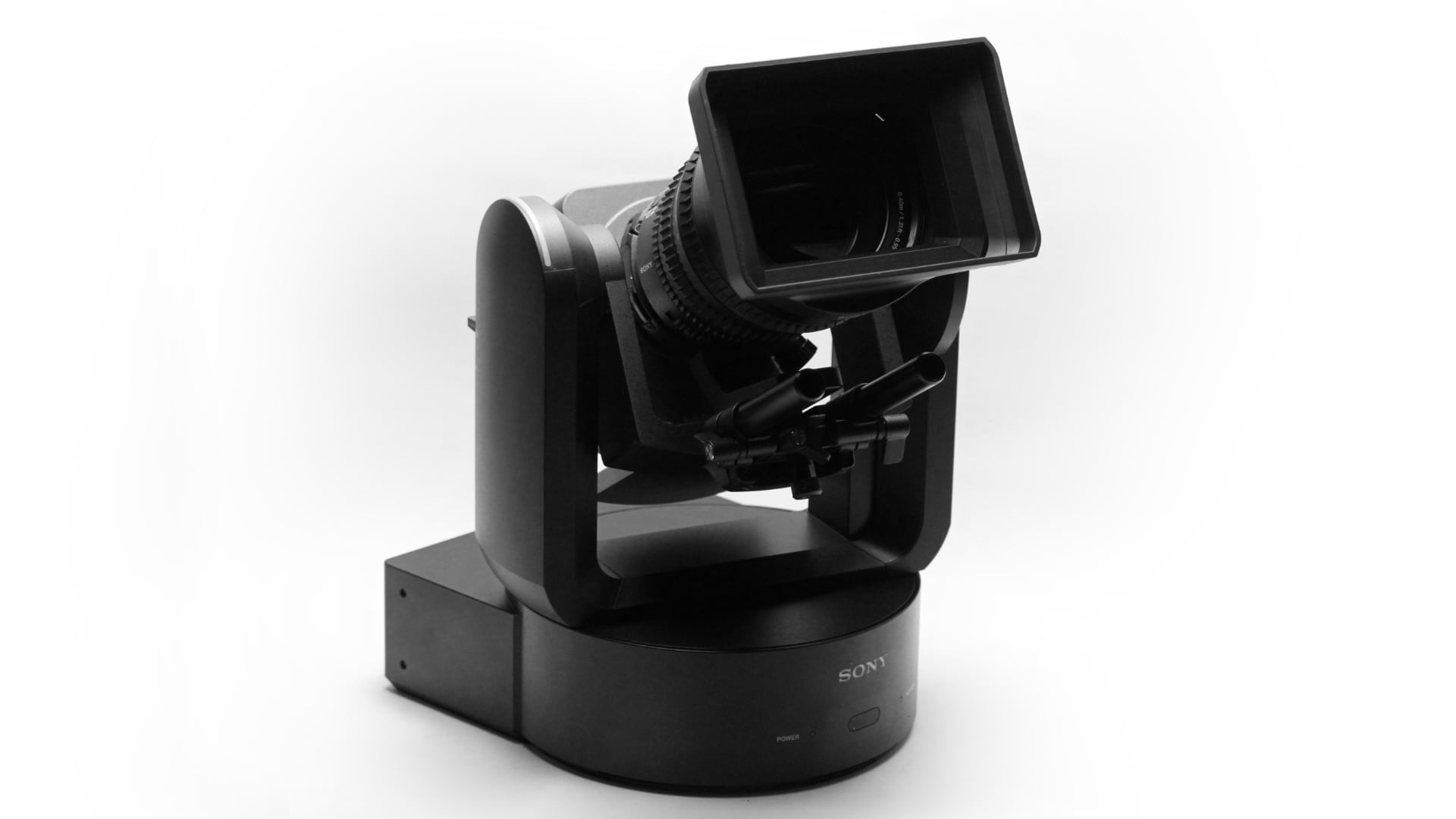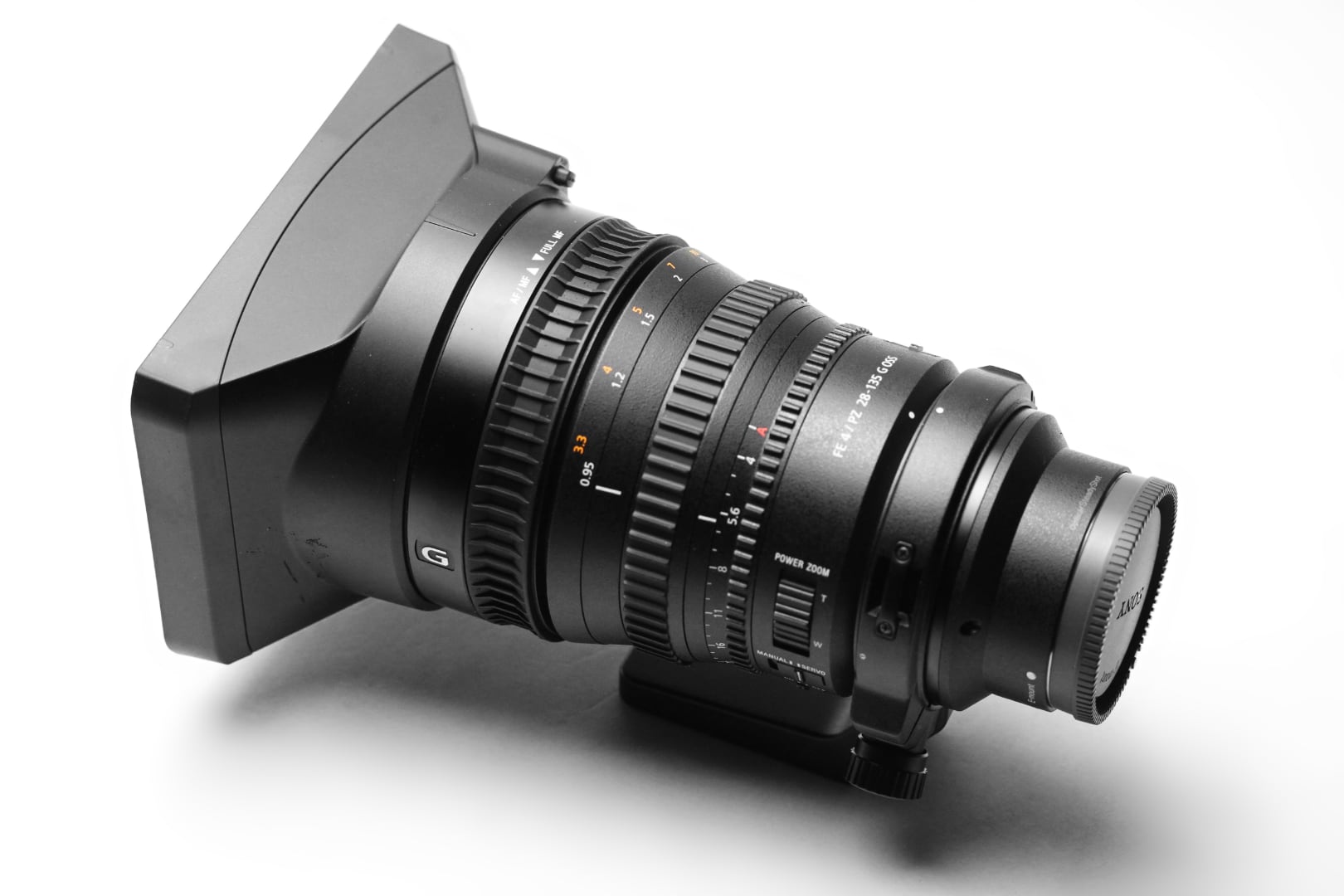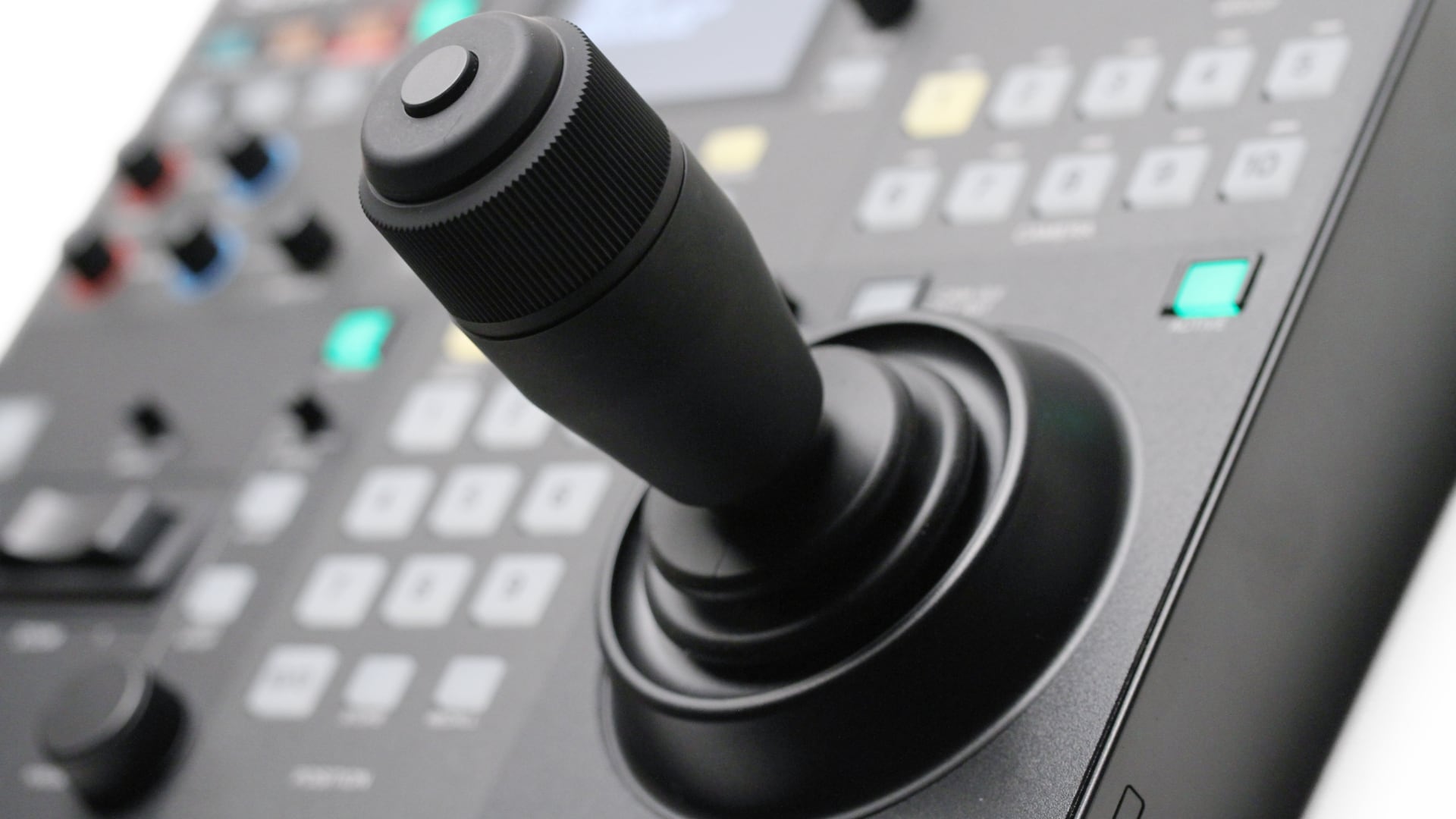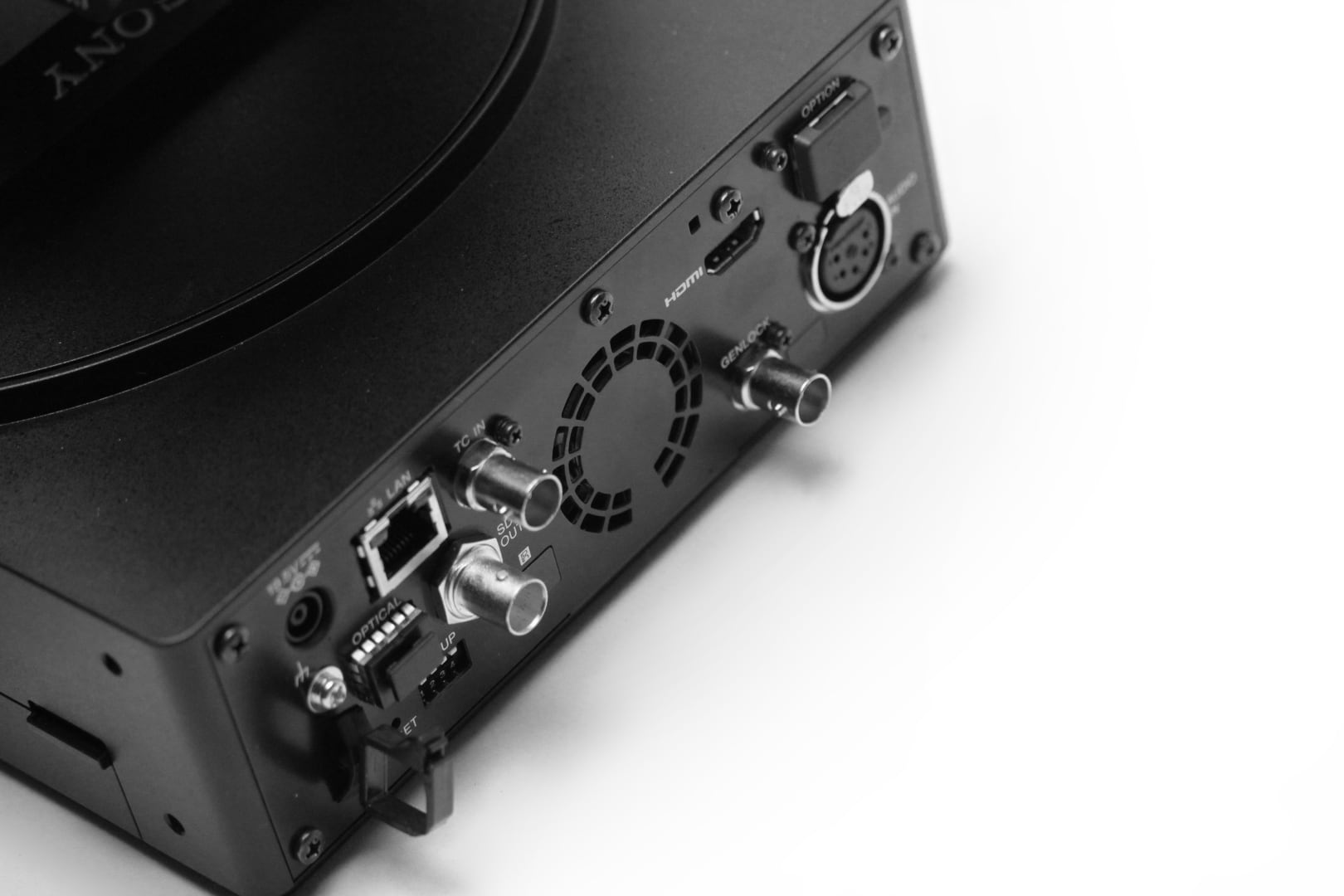
Sony’s FR7 was seen as a game changer for the PTZ camera field when it was unveiled at IBC. Phil Rhodes takes the joystick.
It’s almost as if the industry somehow anticipated the boom in PTZ camera uptake during 2020 and 2021, though new products, especially things like PTZ cameras with mechanical and optical parts, take at least a couple of years to get out of the lab, so it couldn’t have been a reaction, exactly.
Still, many manufacturers have spent the last eighteen months stacking PTZ camera hardware as high as they can. Pictures and mechanics are improving, network connectivity now goes more or less without saying and much of it is fairly commoditised. If there’s a key figure of merit, anything intended to create pretty, broadcastable pictures tends towards bigger sensors. If that’s the race Sony’s ILME-FR7, to give it it’s full name, has set out to win it, because this right here is one edge of the sensor, and that, way over there, is the other. In the end, things turn out to be a bit more complicated than that, but not in a bad way.
FX6 redux
The camera is based on the core parts of the company’s full-frame FX6, which makes it a rare example of a PTZ with an interchangeable lens. The demonstration kit was supplied with the capable 28-135mm f/4 zoom, which is itself one of the better electronic zooms around. It’s part of a range which has been presenting a useful alternative to big, expensive PL-mount options for a while. On a PTZ mount, a servo lens makes creates something more like a conventional PTZ camera – just a bit bulkier, and with a lot, lot, lot more imaging performance than most.
We’re not going to delve too deeply into the particulars of that performance – see the FX6 review – but the most notable feature of the imaging setup is that, like the A7 series stills cameras, it has a deliberately modest resolution. That means sensitivity and low noise. It also means slightly fewer options to window the sensor down while maintaining useful resolution, though it’s clear the priority is pretty pictures rather than big numbers.

That's a lot of lens for a PTZ camera
The FX6 is a diminutive device to begin with, which is presumably why Sony has kept the size and weight of the FR7 down. Key to this is the very shallow depth of the a-mount, which is small itself, but the optical conveniences also allow a 4.8:1 zoom to ride along. Inevitably, the combination is considerably bulkier than many PTZ cameras, but considering it lacks none of the FX6’s features, even retaining dual slot onboard recording, the FR7 is really a pretty compact little thing.
By sheer numbers, most PTZ cameras go into venues such as universities and end up working on computer networks transmitting fairly heavily compressed video, with many even eschewing unnecessary SDI ports. At the other end of the scale, there are full-sized broadcast cameras using SDI and full-bandwidth IP networking. The FR7 will, unsurprisingly, do most of those things out of the box. Most people will use the VISCA control protocol common to the PTZ world, supported either directly or over Ethernet, with or without embedded power.
Serious control with the RM-IP500

For serious control operators need to drive one of these
There is an infra-red remote for very basic operation, but studio or OB setups seem most likely to reach for the RM-IP500 controller, combining conventional CCU and PTZ functionality. It’s an IP-connected device, with the usual menus-as-an-Olympic-sport setup process, but once it’s up and running anyone with fast enough fingers can control up to a hundred cameras in ten pages of ten. The panel implements common CCU features – exposure, gain, etc – but the quality of the mechanical user interface is clearly crucial.
Happily Sony has not stinted on a decent joystick, without excessive spring force or a huge deadzone. The barrier is skill, and it’s a rare one. There’s a common assumption that operating cameras like this is no harder than the average Playstation game, which is certainly not true. Millions of hours of dubious PTZ broadcasting over the last couple of years have made clear that there’s a significant skill to making nice shots with a joystick interface, and not a skill that is easily transferable from Elden Six: Revenge of the Forbidden Ragnarok*. The nicer the camera, the more this matters, and the FR7 is certainly capable of taking the PTZ concept all the way to the movies.
All of those cinematic features, meanwhile, are probably best accessed via the tablet interface, which is certainly the most complete. It implements not only everything we’d expect on a broadcast camera but also everything we’d want on a cinema camera, with wireless networked monitoring to boot. As so often with networked video, it’s fast, but perhaps not fast enough for really demanding operators. The situation highlights the way the feature tracking is key to making things work well. How well they work is notoriously difficult to evaluate, given their reliance on analysing arbitrary image data, so we’ll conclude that it’s reasonably reliable and move on.
The resulting user interface is a little busy – actually, it’s a lot busy – but in the end it’s another talisman of the variety of ways in which the FR7 might be used. Consider Sony’s photos of the camera being used in multi-camera broadcast environments as well as on cranes and sliders on single-camera shows. Whether something that’s basically an FX6 is ever going to catch the eye of a director of photography on a big drama is another matter, but it’s certainly possible to replace a remote head with it as depicted. The FR7 casts a very broad net and may find entirely unanticipated applications, to the point where it’s possibly easier to define what it isn’t.
Where it fits
Connectivity is not a problem
It isn’t a direct replacement for the kind of PTZ cameras used in and lecture halls. At nearly £10,000, plus tax but ex lens, it’s fairly priced but too expensive for conference rooms, and its depth of field behaviour is too near the tricky end of cinematic. Corporations keen to imbue the CEO’s speeches with a little gloss might nonetheless indulge. At the same time, as a cinema camera it’s somewhat limited by the practicalities of using non-Sony lenses. Adapted, more or less anything will fit, but might require remote focus devices that’d likely have to be rigged overslung, loading the tilt axis awkwardly. Mainly, though, it’s so very, very much less expensive than a remote head plus an FX6 that it’s possible to imagine various productions taking one out as a slider- or crane-mounted option.
Sony’s ILME-FR7 is hard to sum up. It’s a new idea and it can do new things, but it’s hardly outlandish, representing an evolution rather than a revolution. In the end it does feel like a speculation, and with that in mind we await interesting applications with keen anticipation.
* Your narrator does not own a Playstation and his comprehension of its current library may be incomplete.
Tags: Production PTZ cameras



Comments